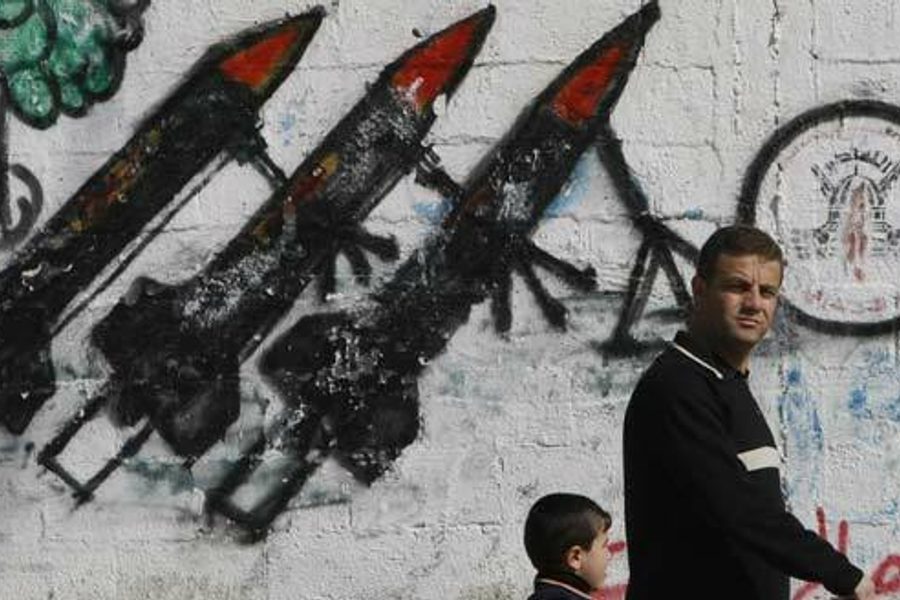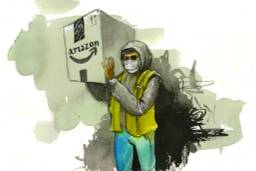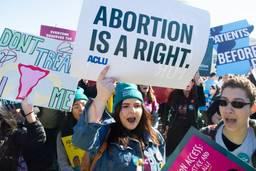
While governments in Europe and the U.S. scramble to boost jobs and revive markets, one country in the “developed” world is striving to pauperize an entire society.
The Gaza Strip is both an occupied territory and a no man’s land; its disenfranchised population has for years remained trapped under a blockade that prevents even the most rudimentary forms of development. A new report from the United Nations sheds light on a different side of the indignity: the systematic violation of their economic and labor rights. The crippling of the Palestinian economy is neocolonialism wrapped up in a humanitarian crisis.
The U.N. Agency for Palestinian Refugees reports that Gaza’s people suffer some of highest unemployment rates in the world, about 45 percent. The difference between Gaza and any other impoverished nation, of course, is that its economic disaster is the product of a deliberate policy imposed by a prosperous colonial regime. After blasting its infrastructure to pieces in a 2008-2009 military campaign, Israel is finishing the job by making Gaza as unlivable as possible.
The blockade has deprived Palestinians not only of basic food, water and infrastructure resources, but of control over their economic conditions and social mobility. Between 2006 and 2010, according to the UN report, average wages fell by about one third.
Moreover, the majority of Gaza’s residents, and those most affected by the Israeli blockade, are refugees, whose displacement has sundered economic and social support networks in both their home communities and in the virtual “open-air prison” of the Gaza Strip.
According to research by the U.N. Office for the Coordination of Humanitarian Affairs, “About 80 percent of the Gaza population is aid dependent” and “About 70 percent of industrial establishments in Gaza have closed under the blockade.” For the past few years, the local export economy has been virtually shut down by restrictions on transport in and out of Gaza, as Israel has cited supposed “security” concerns. But Gaza’s oppressive poverty is a living testament that the siege itself poses a greater public threat than trucks trying to carry out strawberries, or aid convoys attempting to deliver food and medicine.
The Guardian quoted UNRWA spokesman Chris Gunness: “It is hard to understand the logic of a man-made policy which deliberately impoverishes so many and condemns hundreds of thousands of potentially productive people to a life of destitution.”
Actually, it’s easy. Deprive people of food and shelter, and you have a miserable enfeebled populace. But rob them of the means to earn a living and provide for their families, and you’ve destroyed their sense of personhood; you’ve eroded the social fabric and suppressed a basic economic right; and you’ve condemned countless disaffected youth to hopelessness.
The pattern is not unique to Gaza. Throughout Israel and the Occupied Territories, in fact, Palestinian workers have faced rampant discrimination, segregation enforced by a labyrinth of checkpoints, and maltreatment through an apartheid economic structure.
The Gaza report notes that the working-age population (15 years and older) actually grew by 2 percent in 2010 – a youth demographic that is swelling within a strangulated labor market. Overcrowding plus economic frustration lead to the kind of volatility that has exploded throughout the Arab world, and in a context of military occupation, such instability breeds despair and perhaps militancy or violence.
The bulk of the suffering falls on the youngest generations who constitute the majority of Gaza’s population, those who grew up amid war and poverty. IRIN reported earlier this year:
The unemployment rate among those aged 15-19 is about 72 percent, while unemployment affects 66 percent of those aged 20-24, according to a January socio-economic report by the Office of the UN Special Coordinator for the Middle East Peace Process (UNSCO). West Bank unemployment rates were 29 percent and 34 percent for these age groups, respectively. …
“When young people graduate they have almost no opportunity to find a job in a company or association,” said Bassam, a multi-media student at al-Azhar University. Some try to start their own businesses, but “this cannot succeed in Gaza now because of the blockade,” he added.
UN officials in the region have expressed concern that isolating youth in Gaza from broader values and opportunities will backfire. “A rapidly growing society, becoming poorer, that is subject to restrictions on education will encourage extremism in its worst forms,” warned [U.N. Humanitarian Coordinator Max Gaylard].
The collective punishment of Gaza may drive more Palestinians to align with Hamas, whose authority in the area is used by Israel to justify its policies. Hamas has actually provided an economic buffer against the siege by expanding public sector jobs for local residents. As Middle East analyst Juan Cole put it, “Since Hamas controls the public sector, Israeli policy is essentially pushing the Gaza population into their arms.”
In a 2009 Brookings Institution briefing, Edward Sayre described how the two-tier economy shapes the class structure of Palestinian society:
Despite the relatively high level of education of Palestinians, Palestinians from the West Bank and Gaza Strip were excluded from professional jobs in Israel. There were plenty of jobs for semi-skilled workers and tradesman, but not for engineers, architects, and doctors…. Additionally, workers with less schooling will not be earning such relatively high wages as they did previously in Israel, leading to more wage inequality between those with more and fewer skills.
Israel’s colonial project has succeeded in decimating the Palestinian population, but it hasn’t stifled their defiance. The economic siege imposed on Palestinians, along with the foment of the “Arab Spring,” could galvanize the resistance inside and outside of the occupied territories. Egyptian activists have tipped the power balance in the region toward a new border policy for Gaza. Palestinian diaspora refugees have recently escalated protest actions against Israeli border forces. International solidarity organizations are pressuring Israel (and its chief ally, the United States) through boycott campaigns. And with their sheer numbers, the burgeoning Palestinian youth population may force political change both in the Palestinian Authority and in the Israeli regime, particularly as the Palestinian factions Fatah and Hamas creep toward a unified government.
The case of Gaza demonstrates the imperative of economic sovereignty in the quest for political sovereignty. Though Palestinians have suffered many material deprivations over the years, the inability to work and provide for their community threatens their existence as a people. In Gaza, the struggle of workers is a matter of collective identity and national integrity — the first and last line of defense against occupation.

I hope you found this article important. Before you leave, I want to ask you to consider supporting our work with a donation. In These Times needs readers like you to help sustain our mission. We don’t depend on—or want—corporate advertising or deep-pocketed billionaires to fund our journalism. We’re supported by you, the reader, so we can focus on covering the issues that matter most to the progressive movement without fear or compromise.
Our work isn’t hidden behind a paywall because of people like you who support our journalism. We want to keep it that way. If you value the work we do and the movements we cover, please consider donating to In These Times.
Michelle Chen is a contributing writer at In These Times and The Nation, a contributing editor at Dissent and a co-producer of the “Belabored” podcast. She studies history at the CUNY Graduate Center. She tweets at @meeshellchen.







